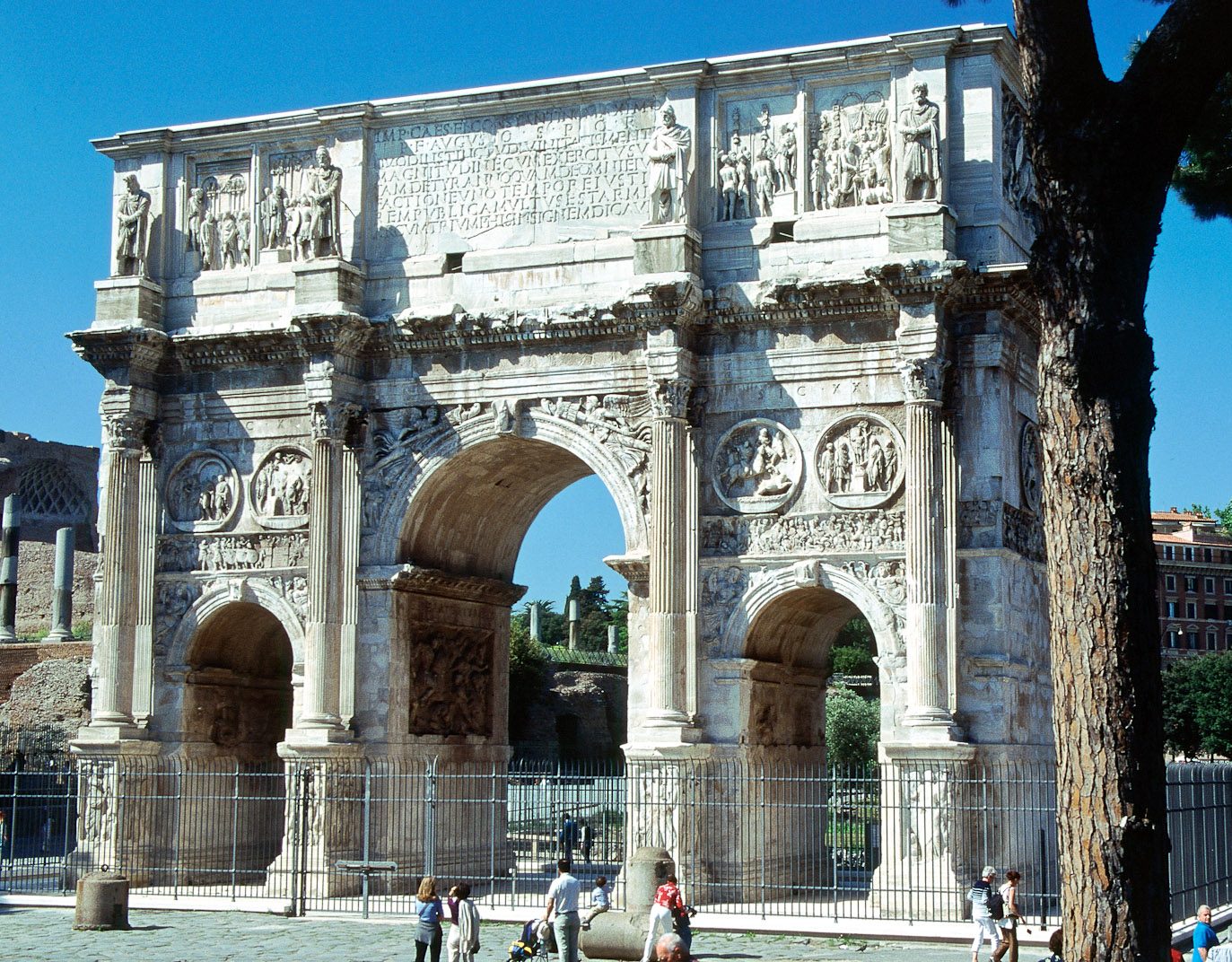The Arch of Constantine is a triumphal arch in Rome, italy situated between the Colosseum and the Palatine Hill, but why was the arch of constantine built? It was erected by the Roman Senate to commemorate Constantine I’s victory over Maxentius at the Battle of Milvian Bridge in 312. Dedicated in 315, it is the latest of the existing triumphal arches in Rome, and the only one to make extensive use of spolia, reusing several major reliefs from 2nd century imperial monuments, which give a striking and famous stylistic contrast to the sculpture newly created for the arch.
Get your dose of History via Email
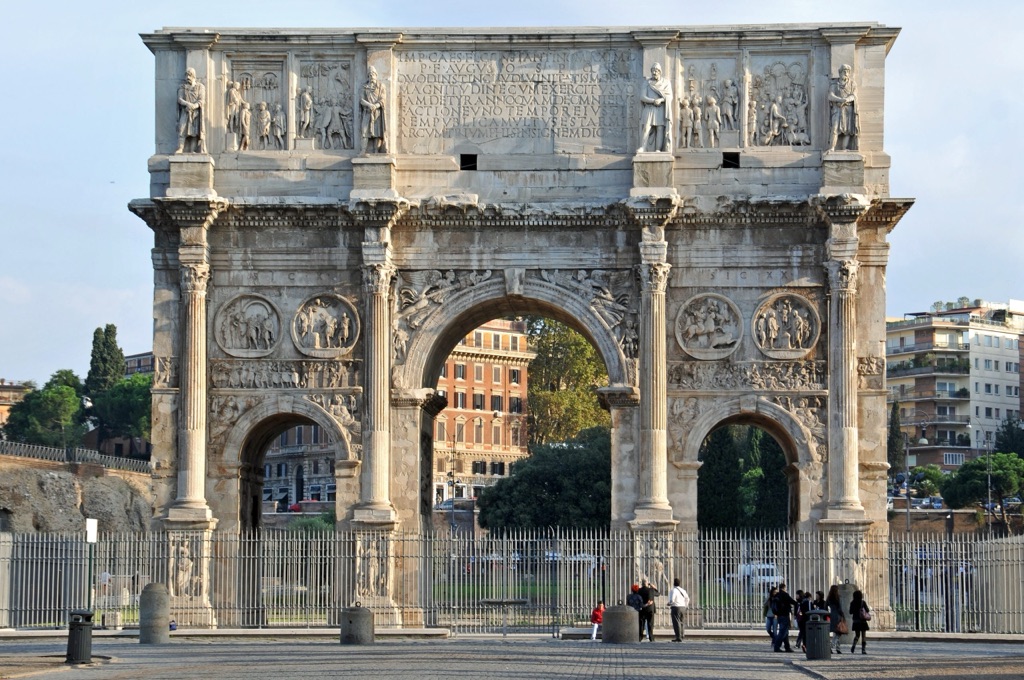
What is the historical significance of the Arch of Constantine and what role did it play in the Roman Empire?
The Arch of Constantine in Rome is historically significant as it represents a period of monumental change in the Roman Empire. The arch was built to commemorate Constantine’s victory over Maxentius, a victory that made Constantine the sole ruler of the Roman Empire. This marked the end of the Tetrarchy, a system of rule by four emperors, and the beginning of Constantine’s reign.
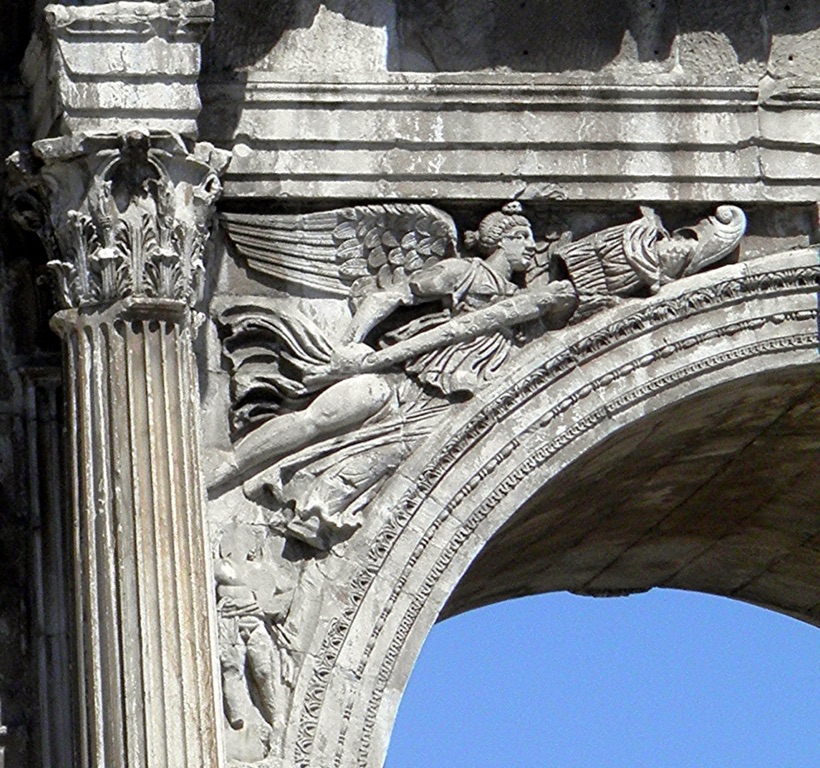
Constantine’s reign was marked by significant religious change. He was the first Roman emperor to convert to Christianity and his reign saw the beginning of the Christianization of the Roman Empire. The Arch of Constantine, with its Christian and pagan symbols, is a physical representation of this transition.
The arch also played a significant role in the ceremonial life of Rome. Triumphal processions, such as those following military victories, would pass through the arch. It was a symbol of imperial power and victory, reinforcing the might of the emperor and the empire.
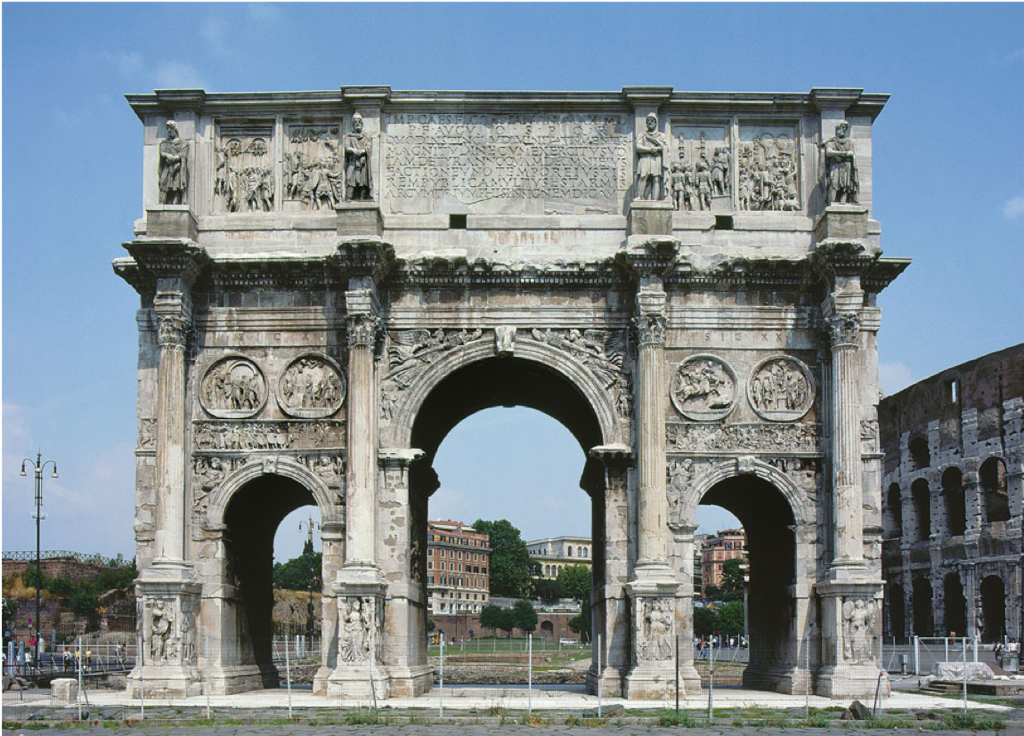
The Arch of Constantine also had a significant impact on architectural design. It became a model for triumphal arches in the centuries that followed, influencing the design of similar structures throughout Europe and beyond.
Furthermore, the arch’s use of spolia, the re-use of earlier building material or decorative sculpture on new monuments, is significant. This was a conscious choice by Constantine and reflects his desire to align himself with the great Roman emperors of the past.
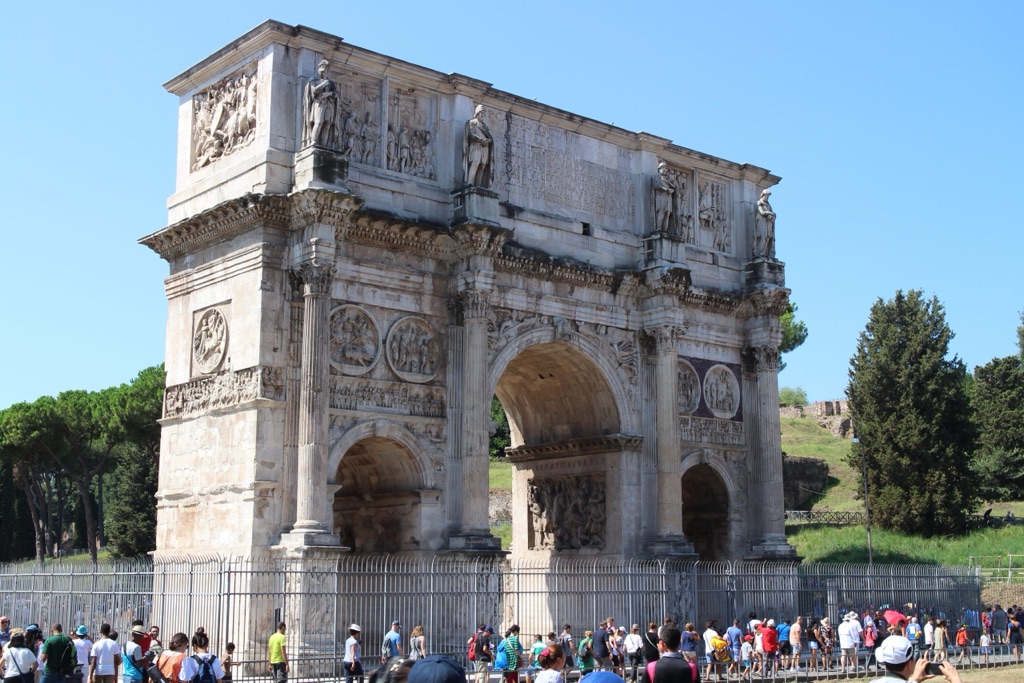
What are some of the key architectural features and artistic reliefs on the Arch of Constantine?
The Arch of Constantine is a three-arched triumphal arch, a design that was common in Roman architecture. The central archway is larger than the two side arches, creating a visually striking structure. The arch is decorated with a variety of sculptures and reliefs, many of which were taken from earlier monuments.
The most notable of these are the round reliefs, or medallions, which depict scenes from the life of Emperor Hadrian. These were taken from an earlier monument to Hadrian and incorporated into the design of the Arch of Constantine. They are significant for their high quality and their depiction of hunting and sacrificing scenes, which were traditional themes in Roman art.
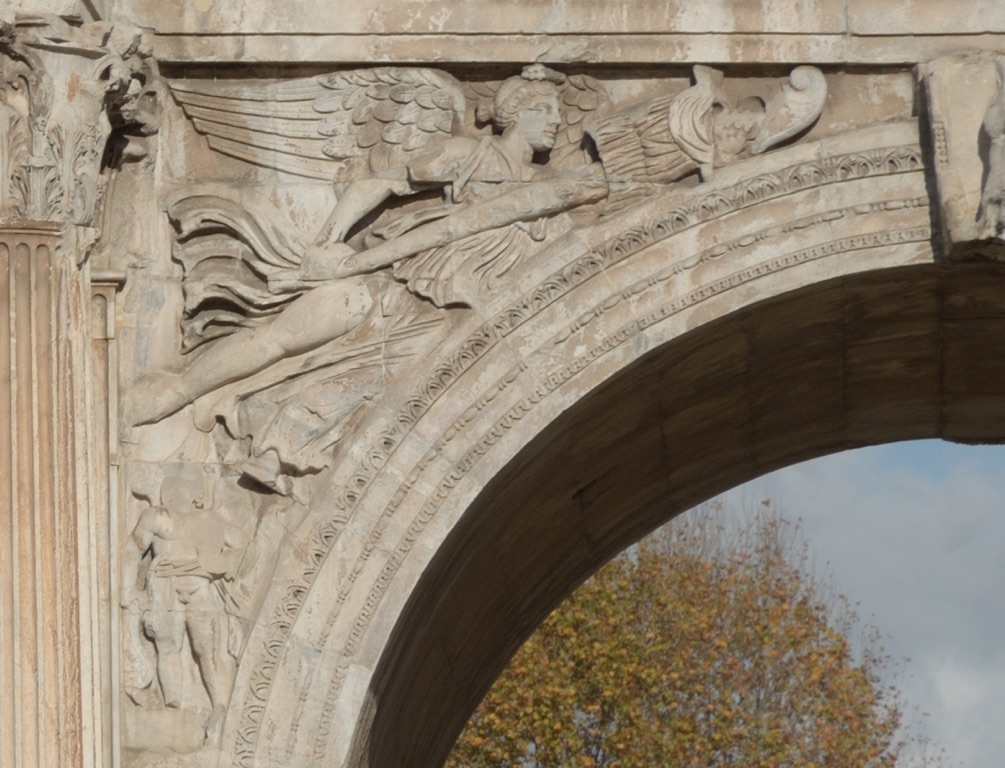
The arch also features a series of rectangular reliefs that depict scenes from the life of Constantine. These were newly created for the arch and are notable for their different style. They are less realistic and more symbolic than the earlier Roman art, reflecting the changing artistic tastes of the time.
The attic, or upper part of the arch, features a large inscription dedicated to Constantine. It also includes a series of statues and reliefs, including a central panel depicting Constantine with the gods of the Roman pantheon.
The combination of old and new artistic styles on the Arch of Constantine is one of its most striking features. It reflects the transitional period in which it was built, a time of significant change in the Roman Empire.
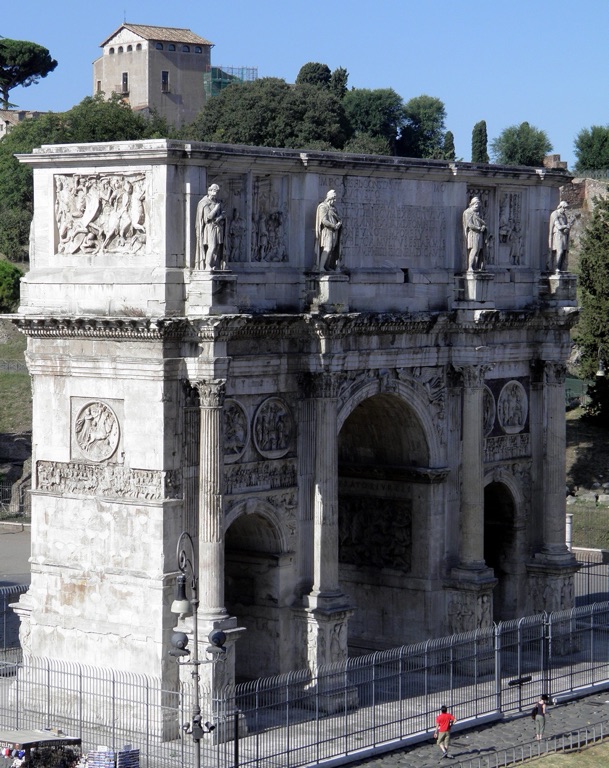
When was the Arch of Constantine built?
The Arch of Constantine was built to commemorate Emperor Constantine I’s victory over Maxentius at the Battle of Milvian Bridge in 312 AD. It was dedicated in 315 AD, on the 10th anniversary of Constantine’s reign. The arch is located in Rome, near the Colosseum, and is one of the most well-preserved Roman triumphal arches.
Conclusion and Sources
In conclusion, the Arch of Constantine is a significant historical and architectural monument. It represents a pivotal period in the history of the Roman Empire and is a physical representation of the transition from paganism to Christianity. Its unique combination of old and new artistic styles makes it a fascinating subject of study for historians and art historians alike.
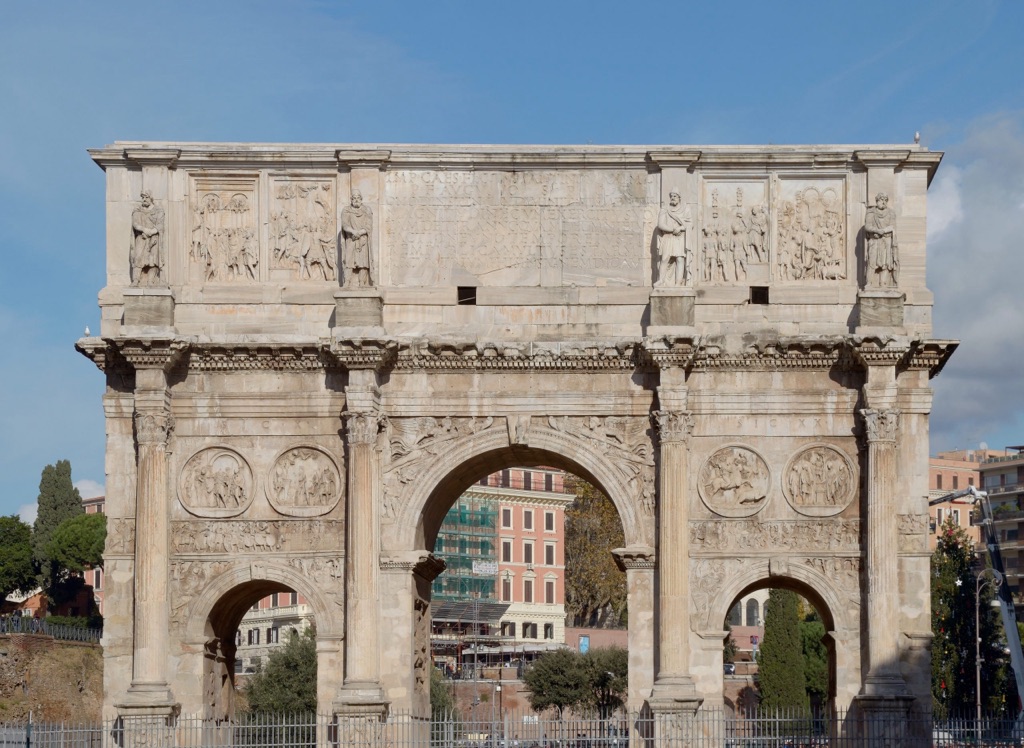
For further reading and to validate the information presented in this article, the following sources are recommended:
FAQ: The Arch of Constantine
When was the Arch of Constantine built?
The Arch of Constantine was built between 312 and 315 AD. It was dedicated in 315 to commemorate Constantine I’s victory over Maxentius at the Battle of Milvian Bridge in 312 AD.
Where is the Arch of Constantine located?
The Arch of Constantine is located in Rome, Italy. It is situated between the Colosseum and the Palatine Hill, along the route of the triumphal procession that emperors and generals would follow after a victorious campaign.
Who built the Arch of Constantine?
The Arch of Constantine was commissioned by the Roman Senate to honor Emperor Constantine I, also known as Constantine the Great, following his victory in the Battle of Milvian Bridge.
Why was the Arch of Constantine built?
The Arch of Constantine was built to commemorate Constantine I’s victory over Maxentius at the Battle of Milvian Bridge. This victory was significant as it led to Constantine becoming the sole ruler of the Roman Empire and marked the beginning of Constantine’s conversion to Christianity, which had profound effects on the Roman Empire and the Christian Church.
What is the Arch of Constantine?
The Arch of Constantine is a triumphal arch in Rome, one of the three surviving ancient Roman triumphal arches in the city. It is a monumental structure that features three archways and is decorated with statues and reliefs that depict scenes of Constantine’s victory and other military successes of previous emperors.
What is the Arch of Constantine made of?
The Arch of Constantine is primarily constructed from marble. It incorporates spolia, or reused materials, from earlier monuments, including statues and reliefs. This reuse of earlier artworks was both a practical choice and a symbolic gesture, linking Constantine’s rule with the illustrious past of the Roman Empire.
Why is the Arch of Constantine important?
The Arch of Constantine is important for several reasons. Architecturally, it is a significant example of Roman triumphal arches, showcasing the art and architecture of the time. Historically, it marks a pivotal moment in Roman history, the victory of Constantine I and his eventual conversion to Christianity, which led to the Christianization of the Roman Empire. Culturally, it represents the adaptation and reuse of previous artistic achievements to serve new rulers and new ideologies, illustrating the continuity and change within the Roman Empire.

